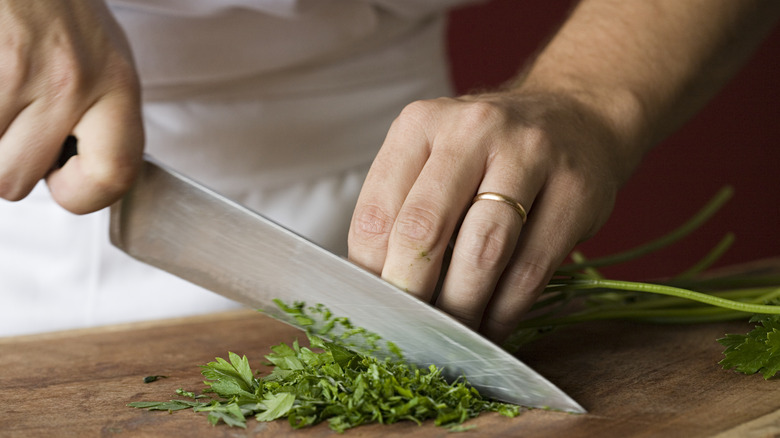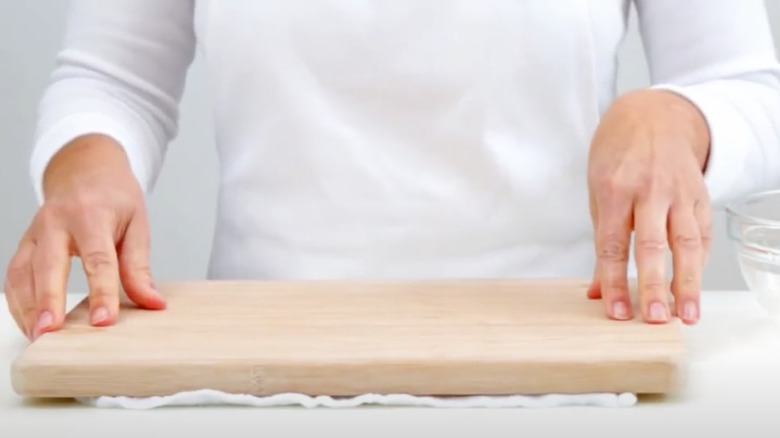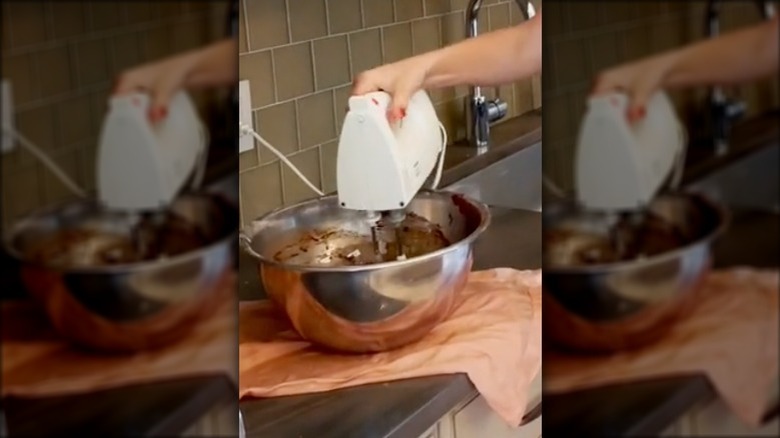Keep Cutting Boards From Slipping With A Culinary School Towel Trick
You don't need to attend culinary school to pick up a few valuable tips from professional chefs, including this finger-saver for preventing cutting boards from slipping. While some composite and plastic cutting boards are manufactured with non-skid rubber feet, others can walk away as you prep your ingredients.
Kitchen safety is essential for chefs who spend eight hours a day handling sharp knives and working near open flames to keep the kitchen operational. It may not be on the top of your mind each time you make dinner, but even the 15 minutes that home cooks spend prepping meals daily increases the risk of an accident. Along with using the proper knife (a serrated knife for bread and tough-skinned foods like tomatoes) and keeping the blade sharp (dull blades slip), preventing the cutting board from roaming is critical to avoid painful nicks and more severe cuts.
Recently washed cutting boards and smooth plastic boards slip easily. While there are a few methods to stabilize them, culinary schools teach new chefs to use an inexpensive, damp dishtowel to keep from chasing the board along the counter and risking an injury.
Use a damp towel
Lifestyle expert Martha Stewart demonstrates this kitchen hack on her YouTube channel. Thoroughly wet a dishtowel as large as your cutting board and wring out the excess water. A thin towel works best (like the flour-sack style), as thick ones can create movement as you cut. Place the damp towel flat on the counter and evenly lay the cutting board on top. The wet dishtowel creates traction between the countertop and cutting board, preventing it from moving, even as you push on the board. In a pinch, when all the dishtowels are in the wash, Stewart recommends using a damp paper towel instead.
Rubber bands can also do the trick for small or lightweight cutting boards. Stretch a thick rubber band around the cutting board, towards the edge where you won't accidentally snap it, and get chopping. If the rubber band is too thin and the board is still moving, add a second one to the other side to increase the contact surface area between the rubber band, the countertop, and the cutting board.
Prevent mixing bowls from slipping with the same trick
More permanent than wet paper towels or rubber bands, non-slip mats can be used for years to prevent cutting boards from wiggling. Purchase a roll of inexpensive rubberized material at home improvement or craft stores and cut the mat to size. It's the same material you use to keep utensils and tools from banging around in drawers. Nonstick baking mats like the Silpat brand can also be used, or for a more permanent solution, look for rubber grips with an adhesive side that can stick to the cutting board long-term.
These cutting board hacks can also prevent mixing bowls from moving. In a TikTok video, celebrity chef Daphne Oz shows how a damp dishtowel stabilizes her mixing bowl as she beats batter with a hand mixer. Some cooks form the wet towel into a ring on the countertop (like a donut) and place the mixing bowl in the center, increasing the surface area in contact. Both methods work well. When done, use the wet towel to clean up small messes left around the mixing bowl or chopping board, and throw the non-slip mat in the dishwasher to sanitize.



